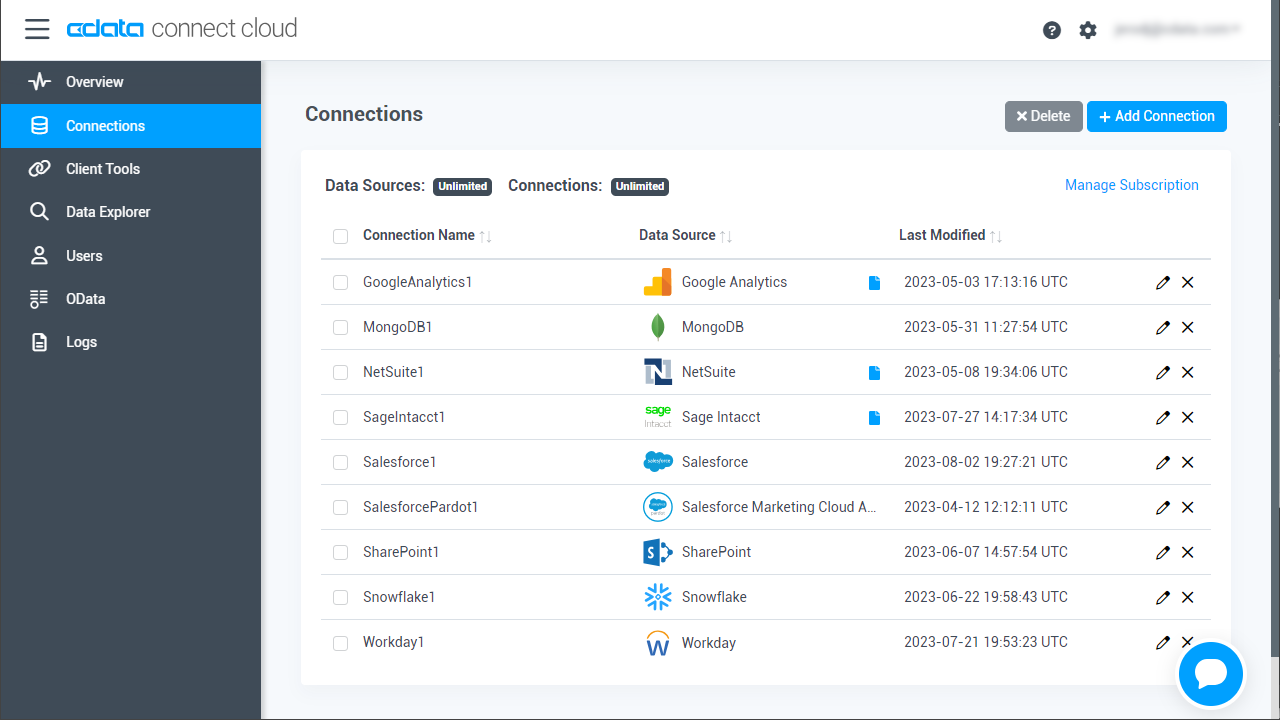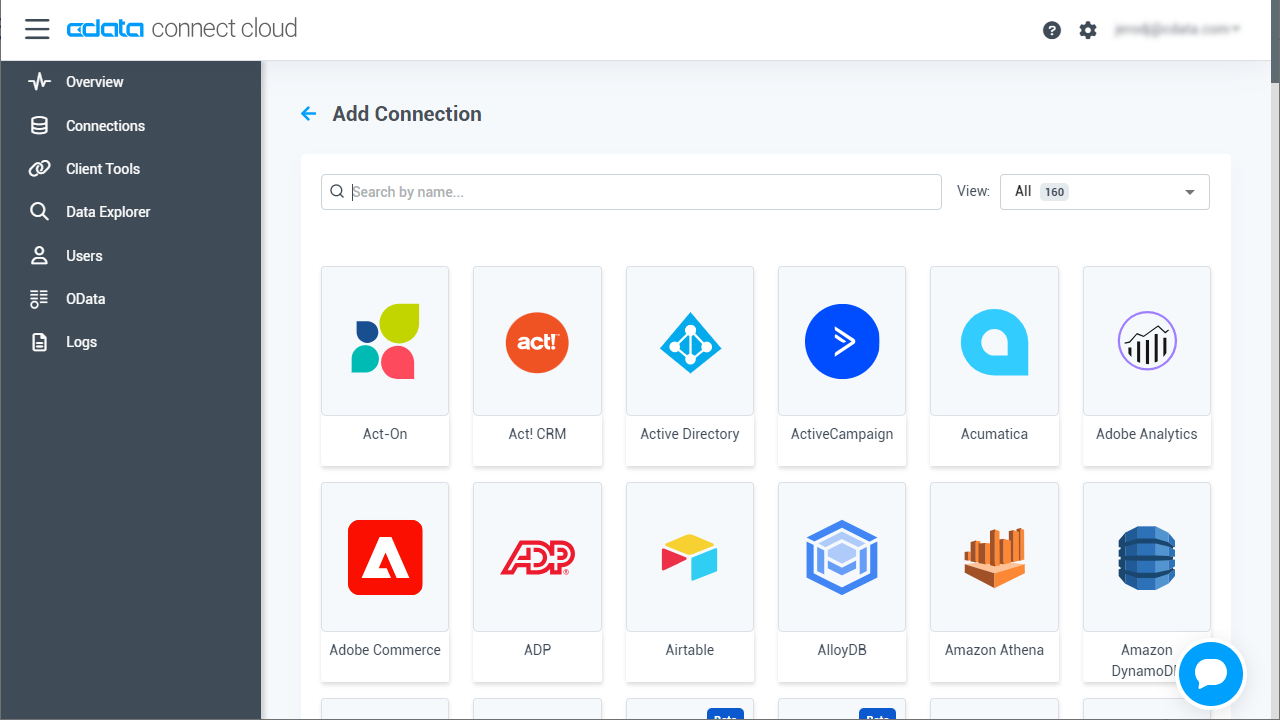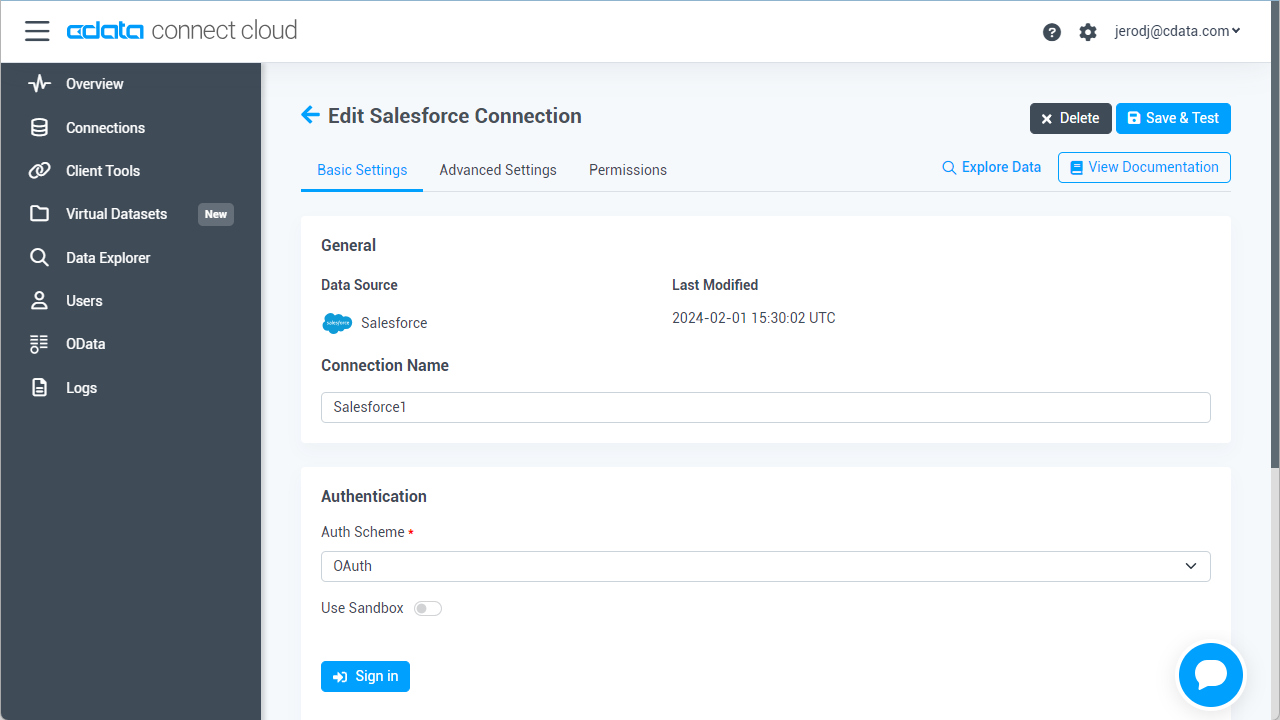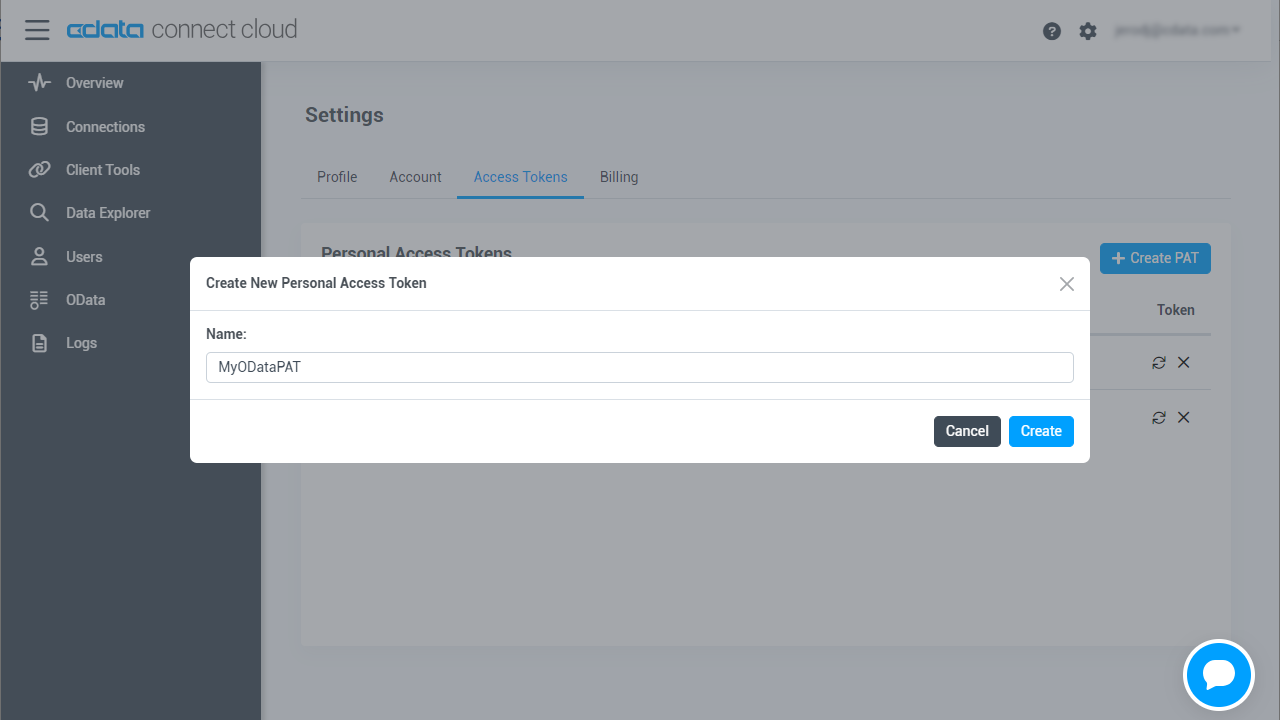Discover how a bimodal integration strategy can address the major data management challenges facing your organization today.
Get the Report →Connect to BigQuery Data in Google Apps Script
Use CData Connect Cloud to access BigQuery data in Google Apps Script.
Google Apps Script empowers users to build custom functionality within their Google documents, including Google Sheets and Google Docs. Apps Script natively supports SQL Server connectivity via JDBC, providing a powerful extensibility tool for connecting Google cloud applications to external data. Paired with the SQL connectivity offered by CData Connect Cloud, users can easily access live BigQuery data directly from within their Google documents.
This article shows how to connect to BigQuery in Connect Cloud and provides sample scripting for processing BigQuery data in a Google Spreadsheet.
About BigQuery Data Integration
CData simplifies access and integration of live Google BigQuery data. Our customers leverage CData connectivity to:
- Simplify access to BigQuery with broad out-of-the-box support for authentication schemes, including OAuth, OAuth JWT, and GCP Instance.
- Enhance data workflows with Bi-directional data access between BigQuery and other applications.
- Perform key BigQuery actions like starting, retrieving, and canceling jobs; deleting tables; or insert job loads through SQL stored procedures.
Most CData customers are using Google BigQuery as their data warehouse and so use CData solutions to migrate business data from separate sources into BigQuery for comprehensive analytics. Other customers use our connectivity to analyze and report on their Google BigQuery data, with many customers using both solutions.
For more details on how CData enhances your Google BigQuery experience, check out our blog post: https://www.cdata.com/blog/what-is-bigquery
Getting Started
Our script only reads data from a specified table, but you can easily extend the script to incorporate update functionality.
Configure BigQuery Connectivity for Google Apps Scripts
Connectivity to BigQuery from Google Apps Scripts is made possible through CData Connect Cloud. To work with BigQuery data from Google Apps Scripts, we start by creating and configuring a BigQuery connection.
CData Connect Cloud uses a straightforward, point-and-click interface to connect to data sources.
- Log into Connect Cloud, click Connections and click Add Connection
![Adding a Connection]()
- Select "BigQuery" from the Add Connection panel
![Selecting a data source]()
-
BigQuery uses OAuth to authenticate. Click "Sign in" to authenticate with BigQuery.
![Authenticating with OAuth (Salesforce is shown).]()
- Navigate to the Permissions tab in the Add BigQuery Connection page and update the User-based permissions.
![Updating permissions]()
Add a Personal Access Token
If you are connecting from a service, application, platform, or framework that does not support OAuth authentication, you can create a Personal Access Token (PAT) to use for authentication. Best practices would dictate that you create a separate PAT for each service, to maintain granularity of access.
- Click on your username at the top right of the Connect Cloud app and click User Profile.
- On the User Profile page, scroll down to the Personal Access Tokens section and click Create PAT.
- Give your PAT a name and click Create.
![Creating a new PAT]()
- The personal access token is only visible at creation, so be sure to copy it and store it securely for future use.
With the connection configured, you are ready to connect to BigQuery data from Google Apps Script.
Connect to BigQuery Data from Apps Script
At this point, you should have configured a connection BigQuery in Connect Cloud. All that is left new is to use Google Apps Script to access Connect Cloud and work with your BigQuery data in Google Sheets.
In this section, you will create a script (with a menu option to call the script) to populate a spreadsheet with BigQuery data. We have created a sample script and explained the different parts. You can view the raw script at the and of the article.
1. Create an Empty Script
To create a script for your Google Sheet, click Tools Script editor from the Google Sheets menu:
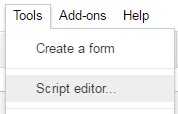
2. Declare Class Variables
Create a handful of class variables to be available for any functions created in the script.
//replace the variables in this block with real values as needed var address = 'tds.cdata.com:14333'; var user = 'CONNECT_USER'; // [email protected] var userPwd = 'CONNECT_USER_PAT'; var db = 'GoogleBigQuery1'; var dbUrl = 'jdbc:sqlserver://' + address + ';databaseName=' + db;
3. Add a Menu Option
This function adds a menu option to your Google Sheet, allowing you to use the UI to call your function.
function onOpen() {
var spreadsheet = SpreadsheetApp.getActive();
var menuItems = [
{name: 'Write data to a sheet', functionName: 'connectToGoogleBigQueryData'}
];
spreadsheet.addMenu('BigQuery Data', menuItems);
}

4. Write a Helper Function
This function is used to find the first empty row in a spreadsheet.
/*
* Finds the first empty row in a spreadsheet by scanning an array of columns
* @return The row number of the first empty row.
*/
function getFirstEmptyRowByColumnArray(spreadSheet, column) {
var column = spreadSheet.getRange(column + ":" + column);
var values = column.getValues(); // get all data in one call
var ct = 0;
while ( values[ct] && values[ct][0] != "" ) {
ct++;
}
return (ct+1);
}
5. Write a Function to Write BigQuery Data to a Spreadsheet
The function below writes the BigQuery data, using the Google Apps Script JDBC functionality to connect to Connect Cloud, SELECT data, and populate a spreadsheet. When the script is run, two input boxes will appear:
The first one asks the user to input the name of a sheet to hold the data (if the spreadsheet does not exist, the function creates it).
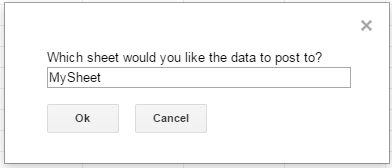
The second asks the user to input the name of a BigQuery table to read. If an invalid table is chosen, an error message appears and the function is exited.
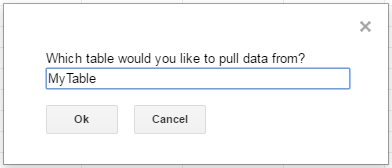
Note, while the function is designed for use as a menu option, you can extend it for use as a spreadsheet formula.
/*
* Reads data from a specified BigQuery 'table' and writes it to the specified sheet.
* (If the specified sheet does not exist, it is created.)
*/
function connectToGoogleBigQueryData() {
var thisWorkbook = SpreadsheetApp.getActive();
//select a sheet and create it if it does not exist
var selectedSheet = Browser.inputBox('Which sheet would you like the data to post to?',Browser.Buttons.OK_CANCEL);
if (selectedSheet == 'cancel')
return;
if (thisWorkbook.getSheetByName(selectedSheet) == null)
thisWorkbook.insertSheet(selectedSheet);
var resultSheet = thisWorkbook.getSheetByName(selectedSheet);
var rowNum = 2;
//select a BigQuery 'table'
var table = Browser.inputBox('Which table would you like to pull data from?',Browser.Buttons.OK_CANCEL);
if (table == 'cancel')
return;
var name = Jdbc.getConnection(dbUrl, {
user: user,
password: userPwd
}
);
//confirm that var table is a valid table/view
var dbMetaData = name.getMetaData();
var tableSet = dbMetaData.getTables(null, null, table, null);
var validTable = false;
while (tableSet.next()) {
var tempTable = tableSet.getString(3);
if (table.toUpperCase() == tempTable.toUpperCase()){
table = tempTable;
validTable = true;
break;
}
}
tableSet.close();
if (!validTable) {
Browser.msgBox("Invalid table name: " + table, Browser.Buttons.OK);
return;
}
var stmt = name.createStatement();
var results = stmt.executeQuery('SELECT * FROM ' + table);
var rsmd = results.getMetaData();
var numCols = rsmd.getColumnCount();
//if the sheet is empty, populate the first row with the headers
var firstEmptyRow = getFirstEmptyRowByColumnArray(resultSheet, "A");
if (firstEmptyRow == 1) {
//collect column names
var headers = new Array(new Array(numCols));
for (var col = 0; col < numCols; col++){
headers[0][col] = rsmd.getColumnName(col+1);
}
resultSheet.getRange(1, 1, headers.length, headers[0].length).setValues(headers);
} else {
rowNum = firstEmptyRow;
}
//write rows of BigQuery data to the sheet
var values = new Array(new Array(numCols));
while (results.next()) {
for (var col = 0; col < numCols; col++) {
values[0][col] = results.getString(col + 1);
}
resultSheet.getRange(rowNum, 1, 1, numCols).setValues(values);
rowNum++;
}
results.close();
stmt.close();
}
When the function is completed, you have a spreadsheet populated with your BigQuery data, and you can now leverage all of the calculating, graphing, and charting functionality of Google Sheets anywhere you have access to the Internet.
Complete Google Apps Script
//replace the variables in this block with real values as needed var address = 'tds.cdata.com:14333'; var user = 'CONNECT_USER'; // [email protected] var userPwd = 'CONNECT_USER_PAT'; var db = 'GoogleBigQuery1'; var dbUrl = 'jdbc:sqlserver://' + address + ';databaseName=' + db; function onOpen() { var spreadsheet = SpreadsheetApp.getActive(); var menuItems = [ {name: 'Write table data to a sheet', functionName: 'connectToGoogleBigQueryData'} ]; spreadsheet.addMenu('BigQuery Data', menuItems); } /* * Finds the first empty row in a spreadsheet by scanning an array of columns * @return The row number of the first empty row. */ function getFirstEmptyRowByColumnArray(spreadSheet, column) { var column = spreadSheet.getRange(column + ":" + column); var values = column.getValues(); // get all data in one call var ct = 0; while ( values[ct] && values[ct][0] != "" ) { ct++; } return (ct+1); } /* * Reads data from a specified 'table' and writes it to the specified sheet. * (If the specified sheet does not exist, it is created.) */ function connectToGoogleBigQueryData() { var thisWorkbook = SpreadsheetApp.getActive(); //select a sheet and create it if it does not exist var selectedSheet = Browser.inputBox('Which sheet would you like the data to post to?',Browser.Buttons.OK_CANCEL); if (selectedSheet == 'cancel') return; if (thisWorkbook.getSheetByName(selectedSheet) == null) thisWorkbook.insertSheet(selectedSheet); var resultSheet = thisWorkbook.getSheetByName(selectedSheet); var rowNum = 2; //select a BigQuery 'table' var table = Browser.inputBox('Which table would you like to pull data from?',Browser.Buttons.OK_CANCEL); if (table == 'cancel') return; var name = Jdbc.getConnection(dbUrl, { user: user, password: userPwd } ); //confirm that var table is a valid table/view var dbMetaData = name.getMetaData(); var tableSet = dbMetaData.getTables(null, null, table, null); var validTable = false; while (tableSet.next()) { var tempTable = tableSet.getString(3); if (table.toUpperCase() == tempTable.toUpperCase()){ table = tempTable; validTable = true; break; } } tableSet.close(); if (!validTable) { Browser.msgBox("Invalid table name: " + table, Browser.Buttons.OK); return; } var stmt = name.createStatement(); var results = stmt.executeQuery('SELECT * FROM ' + table); var rsmd = results.getMetaData(); var numCols = rsmd.getColumnCount(); //if the sheet is empty, populate the first row with the headers var firstEmptyRow = getFirstEmptyRowByColumnArray(resultSheet, "A"); if (firstEmptyRow == 1) { //collect column names var headers = new Array(new Array(numCols)); for (var col = 0; col < numCols; col++){ headers[0][col] = rsmd.getColumnName(col+1); } resultSheet.getRange(1, 1, headers.length, headers[0].length).setValues(headers); } else { rowNum = firstEmptyRow; } //write rows of BigQuery data to the sheet var values = new Array(new Array(numCols)); while (results.next()) { for (var col = 0; col < numCols; col++) { values[0][col] = results.getString(col + 1); } resultSheet.getRange(rowNum, 1, 1, numCols).setValues(values); rowNum++; } results.close(); stmt.close(); }





